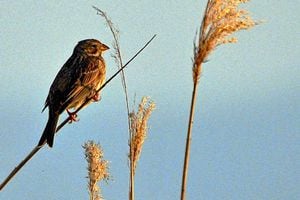BBC feature on bird count should be interesting
Ten million viewers will switch on this Sunday to watch Countryfile, writes Game and Wildlife Conservation Trust chairman Tim Main.

The BBC recently visited the Game and Wildlife Conservation Trust's Allerton Project farm to film a feature on the GWCT's first ever "Big Farmland Bird Count." It should make interesting viewing.
It is pleasing to know that Shropshire farmers and landowners have taken part in the farmland bird count, organised by the GWCT, the point being a massive 40,000 acres of special wildlife seed crops are now being grown on farmland across England according to recent figures gathered through Defra and the Campaign for the Farmed Environment.
In addition, the Game & Wildlife Conservation Trust reports that thousands of tonnes of grain such as wheat are now being provided as supplementary food for farmland birds during the "hungry gap" between January and May.
With all these vital "green" measures for wildlife being provided by farmers and gamekeepers, it is crucial to understand how conservation work being carried out on farmland in this country is helping some of our most rapidly declining birds and importantly, which species are benefiting most.
This was one of the largest counts of farmland birds ever conducted and it will help to show how our farmland bird species are faring.
Jim Egan, from the GWCT's Allerton Project Farm, says: "Farmers and gamekeepers are responsible for managing the largest songbird habitat in this country on their land. Their efforts to ensure the future survival of many of our most cherished farmland bird species such as skylark, yellowhammer, corn buntings and wild grey partridges are therefore vital."
Meanwhile, you may be surprised to hear that in March, it was dry enough for heather burning on the Long Mynd and Stiperstones, before the season closed. To some burning may seem a strange way to go about conservation, but the rejuvenated heather habitat and associated insects will be the lifeblood for survival of grouse chicks hatching in the coming months.
Globally heather moors are rarer than the rainforest, but they just haven't got the high profile publicity. Happily in Shropshire we have one of the most diverse landscapes in the UK – which surely should be mirrored by the diversity of our farmland birds.





